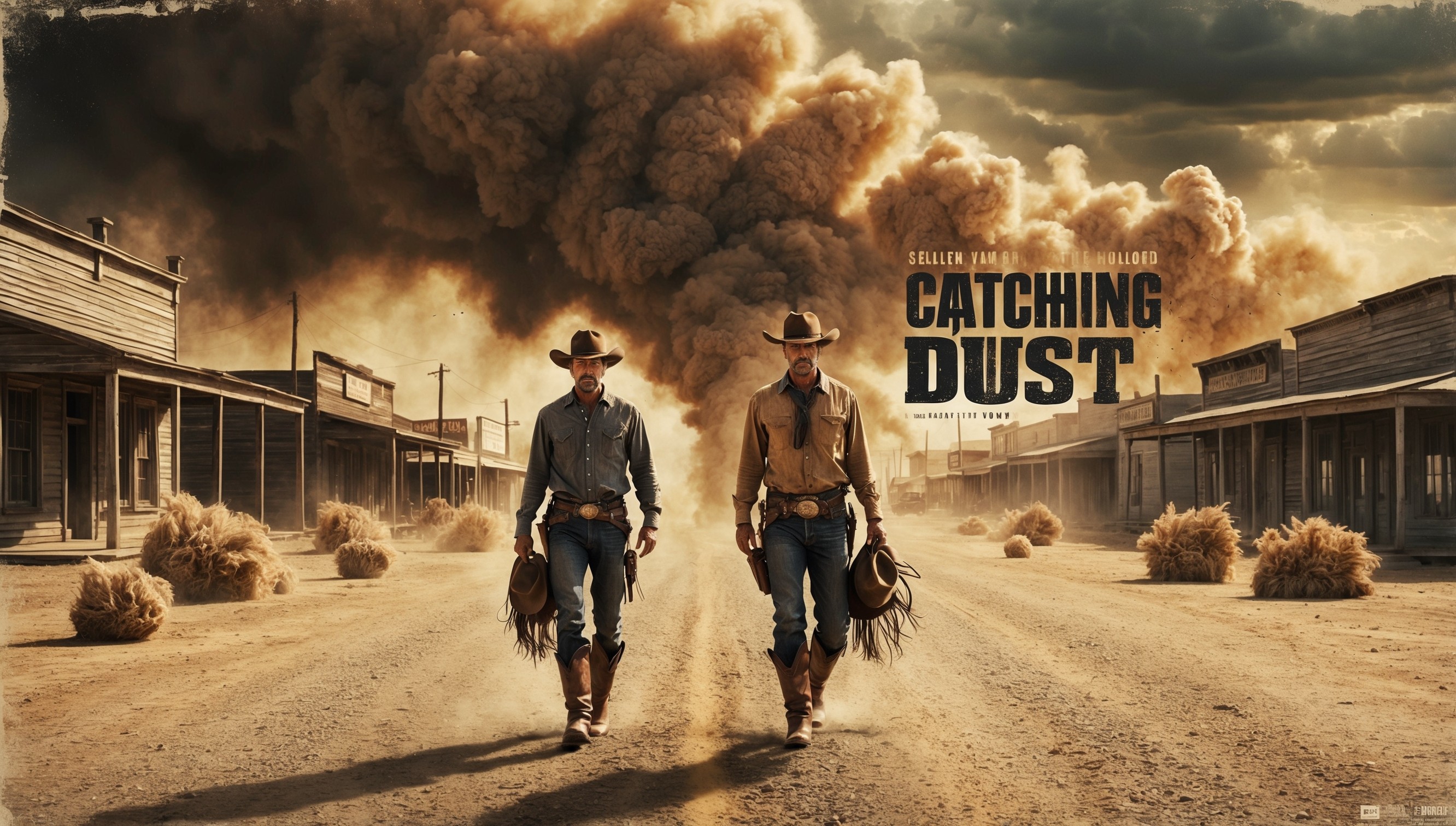
In a cinematic landscape where the allure of isolation can often overshadow deeper human connections, the film “Catching Dust” presents a compelling narrative woven with themes of estrangement and the yearning for identity. Set against the stark backdrop of the vast desert, this debut feature from an emerging filmmaker encapsulates the struggles of a couple whose attempts to reinvent themselves are challenged by the arrival of new neighbors. This profound examination of interpersonal dynamics reveals the complexities that emerge when secrets intertwine with human relationships, further pushing the boundaries of isolation and connectivity.
Catching Dust: A Narrative Exploration
“Catching Dust” unfolds in the desolate beauty of the Texas desert, where the barren landscape mirrors the emotional void experienced by its protagonists. The story centers around Clyde and Geena, who are embroiled in a turbulent relationship. Their secluded existence becomes increasingly strained by underlying tensions and unfulfilled desires, setting the stage for an exploration of emotional isolation.
The Characters: Clyde and Geena
Clyde, portrayed by Jai Courtney, is a complex figure whose protective instincts often stifle Geena, played by Erin Moriarty. As their conflict escalates, Geena grapples with the loss of her autonomy and self-expression, feeling entangled by Clyde’s decisions that have driven them away from the world. Clyde's fears for their safety only exacerbate Geena's feelings of confinement, resulting in a tense dynamic that forms the crux of their relationship.
Enter the Neighbors: Andy and Amaya
The arrival of Andy and Amaya introduces a fresh layer of conflict. They represent both a potential escape and a source of unease for Geena, who sees them as an opportunity to reconnect with the world she longs to be part of. However, the reality is more intricate; Andy and Amaya are not immune to their own struggles, which create a volatile mix of attraction and resentment between the two couples.
The Theme of Isolation

Isolation is a pivotal theme that permeates the film. Gatt masterfully illustrates how physical distance from society can amplify emotional distance in relationships. As Geena embodies the longing for connection, the stark desert serves as a silent witness to the breakdown of her marriage. Gatt poignantly captures this solitude, highlighting that loneliness can arise even in proximity to others.
Emotional Discontent and Hidden Secrets
Both couples hold secrets that threaten to surface. Andy and Amaya’s past is shrouded in mystery, and their decision to move west raises questions about their motivations. Amaya’s glazed expressions hint at a burden she's carrying, while Andy’s eagerness to befriend Geena stems from his lack of fulfillment in his own marriage. Their interactions set in motion a tragic unraveling of connections, as underlying tensions come to the forefront.
Architectural Influence of Past Narratives
The film draws structural inspiration from Edward Albee’s classic “Who’s Afraid of Virginia Woolf?” while incorporating elements typical of Western storytelling. Much like Albee’s complex characters, the couples unraveled in “Catching Dust” share a painful bond, revealing moments of vulnerability. However, unlike Albee's more despondent characters, Gatt infuses a sense of hope within each individual, giving room for potential growth amid despair.
Pacing and Cinematic Style
The pacing of “Catching Dust” is deliberate, which allows for a reflective viewing experience but can also feel excruciatingly slow at times. The use of long takes juxtaposed with moments of deafening silence creates a meditative atmosphere where the audience is invited to linger in the characters’ emotional turmoil. Yet, at points, the drawn-out sequences may seem overly indulgent, risking viewer disengagement.
Performance Highlights

"Catching Dust" is an experience that aligns with those partial to the Western genre and slow-burn character studies. If viewers are willing to immerse themselves in the emotional landscape and pace of the film, they may find moments of beauty amidst the despair. The standout performances of the lead actors carry substantial weight, evoking complex reactions that hold potential for cinematic discourse.
Final Thoughts
As the movie approaches its conclusion, it leaves viewers pondering the nature of love and connection in a world that often pushes individuals into solitary corners. Gatt's directorial finesse and commitment to exploring the nuances of relationships suggest that he is a talent to watch in the future. “Catching Dust” does not shy away from discomfort; instead, it revels in it, calling attention to the compelling narratives that thrive in the silence between words.
For those intrigued by a tale that marries the vastness of the West with intimate human conflict, “Catching Dust” provides a reflective yet tumultuous journey worthy of exploration. Available in theaters on August 23, 2024, this film promises a unique blend of personal drama and Western aesthetics that could redefine how audiences perceive connection and isolation.